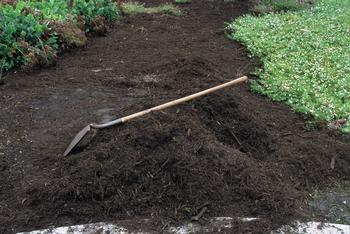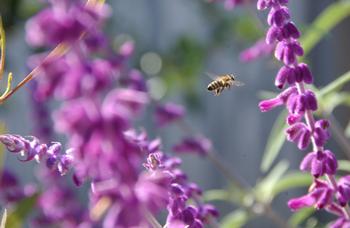How to find a landscape professional who practices earth-friendly, sustainable gardening
-
Julie McMillan
-
Facing climate change, drought and wildfires, we need to practice earth-friendly, sustainable gardening to safeguard the environment, protect natural resources and boost biodiversity, while minimizing waste and pollutants. If you need to hire a landscape professional, find one who will bring these practices to your project by asking these questions:
How will you nurture the soil? Organic compost will help nurture your soil. Photo: Jack Kelly Clark, University of California State IPM Program
Organic compost will help nurture your soil. Photo: Jack Kelly Clark, University of California State IPM ProgramSoil is a critical component of the environment. It stores carbon, and is a complex, dynamic material in which physical, chemical, and biological reactions are constantly occurring. Does your candidate recommend compost? It is essential for healthy soil, and its nutrients are released slowly and are then available for plants. Compost also increases the water-holding capacity of soil. Will work on the project crush the soil? Compacted soil leads to poor drainage and low aeration for plants.
Which plants will you recommend?
Ask to see a portfolio of prior work. Look for native or Mediterranean plants because they are better adapted for our climate and use less water. Invasives should be avoided because they disrupt natural ecosystems, displace native plants, and alter wildlife habitat. (Plants to avoid include ice plant, pampas grass, French broom, and English ivy among others.) Does your candidate understand how big the plants will be at maturity? This will allow proper spacing and save money. Will plants be proposed up to the edge of your house? Creating defensible space of five feet around your home will help protect it from wildfires.
How will you reduce water use?
As water becomes scarcer, it is critical to know when and how much to water. Will the design group plants by water usage, or hydrozone? What kind of watering system would be proposed? Drip irrigation uses less water than sprinklers. A smart controller using weather or soil information also reduces consumption. During severe drought, infrequent but deep watering helps preserve plants by encouraging deeper root growth.
Will mulch be added on top of the soil to reduce evaporation and runoff? Mulch also controls weeds, reduces erosion, buffers soil temperature, reduces compaction, and looks attractive. Avoid gorilla hair mulch (shredded redwood or cedar bark) because it is highly flammable.
Is a lawn proposed? Lawns should be reduced (or eliminated) as they use three to four times as much water as drought-tolerant species. (Artificial turf is no better as it can heat up to more than 130 degrees, kills the soil below it, only lasts about ten years, and takes decades to decompose.) What materials will be used for paths and patios? Permeable, porous surfaces increase water infiltration.
How will you avoid using toxic materials and pesticides?
Pesticides gravely damage beneficial insects, and its runoff pollutes waterways and harms aquatic life. How will insects, disease and weeds be controlled? Proper plant selection and recommended cultural practices work best. Is the candidate familiar with integrated pest management, which uses pesticides only as a last resort? What kind of soil amendments will be used? They should be natural, not chemical.
How will you create a wildlife habitat? A honey bee buzzes through salvia, also known as Mexican sage. Photo: Keatley Garvey
A honey bee buzzes through salvia, also known as Mexican sage. Photo: Keatley GarveyA balanced ecosystem supports a wide array of plant and animal species, and attracts butterflies, birds, beneficial insects and other wildlife. Does your candidate know how to create a wildlife habitat, providing food, water and shelter? Flowers with varying bloom periods provide continuous pollen and nectar for bees, butterflies and hummingbirds. Biodiverse plantings attract a wide diversity of wildlife. Will the design also include a small water feature and shelter.
Asking the right questions will help you find a landscape professional who brings earth-friendly, sustainable gardening to your project. This will benefit your garden today, as well as our environment now and for generations to come. For more earth-friendly gardening tips, please visit marinmg.ucanr.edu/basics/earthfriendly/.


